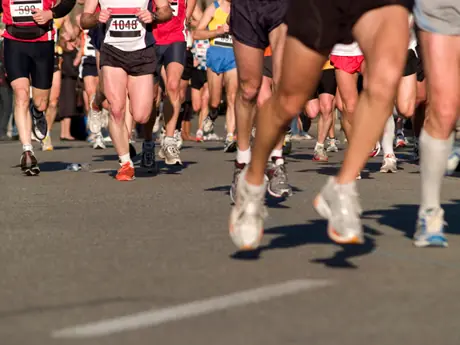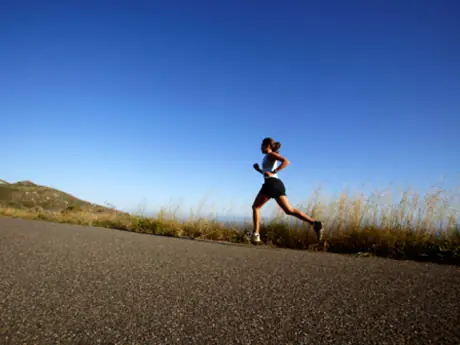The most loyal of fans
Still, barefoot running in its purest form continues to have a strong legion of followers.
On May 7, enthusiasts around the globe will unite for shoeless runs to mark International Barefoot Runners Day, an event the Barefoot Runners Society created seven years ago.
Adam Gentile, a 46-year-old from Fairfield, Conn., is among the most committed barefoot runners.
After reading about shoeless running online, he ditched his Asics Kayanos in 2009 to give it a try. He even skipped minimal footwear altogether and went straight to hitting the pavement barefoot. He had aches and pains at first, but within two months, was running comfortably without shoes.
"I think being one hundred percent dedicated to running barefoot was a big factor to my success," he says.
Since then, Gentile has run 10 marathons and five half marathons and even conquered a 50K trail run—some of which was on gravel—with bare feet.
His feet have gotten wider and the skin around the arches of his feet has toughened up. To the surprise of some, his feet are not rugged with callouses, he says.
He has stepped on tiny pieces of glass from time to time and bruised his feet on small rocks, but hasn't suffered any severe injuries.
"You become more aware of your surroundings," he says. "You learn to scan the road as you run."
During the summer, Gentile runs early in the day to avoid scorching pavement. And he's not deterred by New England winters, though he does keep a pair of Vibram Five Fingers for really harsh days.
"I do run in snow barefoot during the winter but not for long distances," he says.
His most challenging barefoot run was last winter, during a 3.1-mile jog when it was 12 degrees.
His advice for those thinking about kicking their kicks to the curb? Start slow with short distances, and avoid soft surfaces, such as sand or grass, so you can work on developing strong form.
"You want to start on hard surfaces because that will be the best teacher," he says. "Running on hard surfaces will instantly let your body know if you are landing too hard or heel striking."
And be patient. Gentile says it takes a year for your feet and ankles to fully adapt to running without shoes.
 READ THIS NEXT: Should Runners Log Miles on Dirt and Grass?
READ THIS NEXT: Should Runners Log Miles on Dirt and Grass?
Connect with us on Twitter, Facebook, Instagram or Pinterest for more tips, recipes and ideas to fuel your ACTIVE life.
- 3
- of
- 3
Get ACTIVE on the Go


Couch to 5K®
The best way to get new runners off the couch and across the finish line of their first 5K.
Available for iOS | Android







Discuss This Article